
How Dentsu Transformed an Adorable Long-Established Mascot into a Demonic Bird

In Japan, it is common for companies and municipalities to have their own mascot characters. While such mascots have been appearing one after another in recent years, some characters are well-established household names, enjoying widespread popularity over many years.
One of those long-loved characters recently underwent a transformation into a demonic version of itself in Dentsu’s massively successful ad campaign for Nissin Foods Holdings Co., Ltd. In the campaign, the popular mascot for Nissin’s lineup of chicken ramen instant noodles, an adorable chick named Hiyoko-chan, suddenly turned into a demonic bird to promote a new three-pack chicken ramen product called Akuma no Kimura (Demonically Spicy Ramen). The campaign has received numerous advertising prizes, including a Grande Lotus award in the Brand Experience & Engagement Lotus category at ADFEST 2019, the Asia-Pacific region’s leading advertising festival.
Noriaki Onoe, a planner from Dentsu’s CDC, was one of the members of the team handling the project. Dentsu asked him about what techniques and strategies were deployed in this bold campaign to mutate a long-established mascot character, and how his ideas developed over the course of the project.
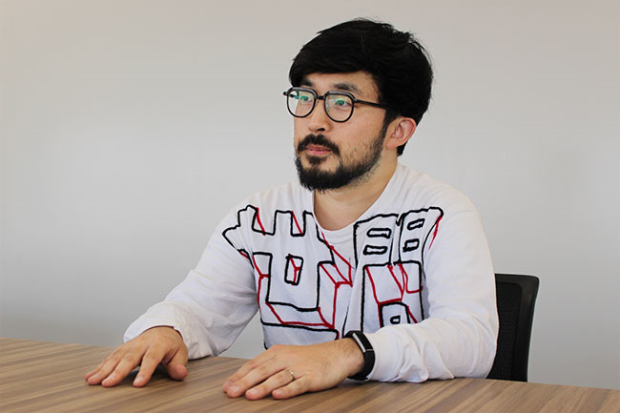
Because the character was so long - established, we had to provide its motive for turning evil
Q> How did the idea to transform Nissin’s popular mascot character into a demon originate?
Noriaki Onoe> Actually, the idea originally came up in our first meeting with Nissin Foods. Its brand of chicken ramen instant noodles has a long history, so its customer base is made up of families and relatively older consumers for the most part. For that reason, Nissin Foods wanted to attract younger consumers by creating an exciting new brand of spicy ramen called Akuma no Kimura. That was the context for the original idea.
A lot of ideas came up during our presentation, which was attended by the president of Nissin Foods. As the discussions grew more and more animated, we started talking about transforming the Hiyoko-chan character into a demonic bird. With that concept as the basis of the campaign, we thought that using an aggressive heavy metal song as a soundtrack for the chicken ramen commercial would be a compelling means to express that transformation.
We took the idea back to Dentsu, and under the direction of our creative director, Kota Tohata, our team decided on how to depict the mascot’s metamorphosis into a demonic bird in the TV commercial. Specifically, the commercial shows the Hiyoko-chan character raising a bowl of the Akuma no Kimura instant noodles up to the sky to summon the demon, and then suddenly undergoing a demonic transformation. Incidentally, we adopted the idea of summoning the noodles for three minutes (the time of waiting for the instant noodles to cook after filling the bowl with boiling water) based on a suggestion in the presentation. Using the specific term “Summon for three minutes” for the action of preparing the noodles made it easier for us to create a buzz on social media sites. We also incorporated this idea in the backing track of the commercial.
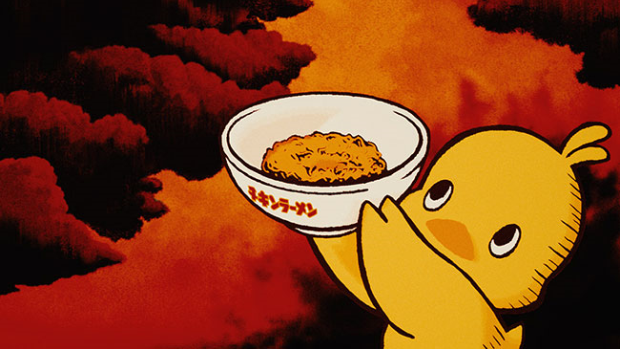
By itself, the TV commercial depicts the character’s sudden transformation without providing any context. That would have been too abrupt for fans of Hiyoko-chan to accept because this character has been popular for such a long time. Therefore, we created a background story in advance of airing the commercial to provide the reason for and the process of the metamorphosis. It was important to explain Hiyoko-chan’s motive for turning evil. It’s funny, but I had always felt sorry for the mascot because it is a chicken doing commercials for chicken ramen. It was also shown using eggs to make meringue cookies in a character book published in the past.
It’s rather morbid when you think about it. For that reason, we used those elements in the background story.
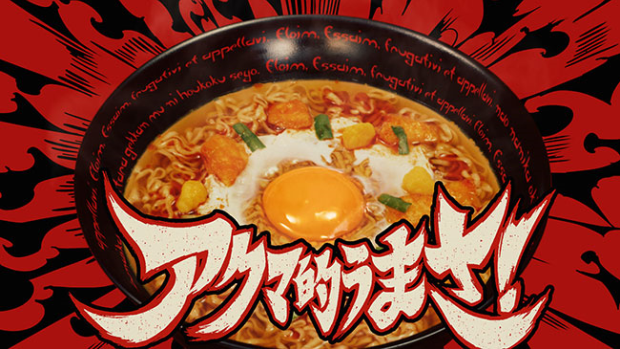
Unclear or ambiguous aspects of the content could lead to a negative reaction
Q> How was the background story of the character’s transformation created?
Noriaki> Around that time, many users of Twitter in Japan had been accidently posting private tweets on their public accounts. By having Hiyoko-chan do the same thing on a Twitter account, we thought such tweets would attract some interest. Indeed, Hiyoko-chan had only been tweeting like a good mascot until then, so if it suddenly started tweeting some nasty things, people would take notice.
We began by having Hiyoko-chan post a long “caw” to get attention, followed by a string of shocking tweets declaring “I’ve had enough,” “This farce is over,” and “How can a chick be advertising chicken ramen?”
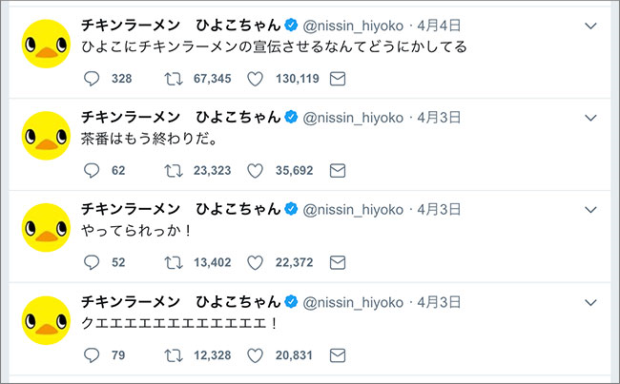
After seeing these posts, many of Hiyoko-chan’s followers checked Nissin Foods’ chicken ramen website to see what was going on, only to discover the mascot’s resignation letter declaring “No more goody - goody!”
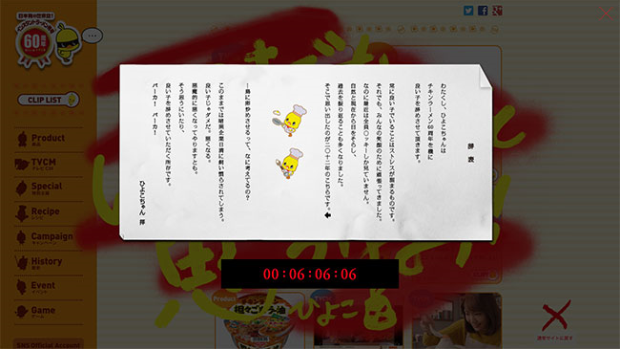
After that, other Nissin Foods product webpages were defaced with Hiyoko-chan’s rough graffiti. We also created a special website in collaboration with the magazine Mu, which specialises in the occult and unexplained mysteries, featuring content that confirmed and explained the main reasons and events leading up to the character’s transformation.
Updates were later added to the background and story of the metamorphosis, with the magazine even suggesting that the demonic version of Hiyoko-chan appeared to be Caim, one of the 72 demons listed in the Lesser Key of Solomon.
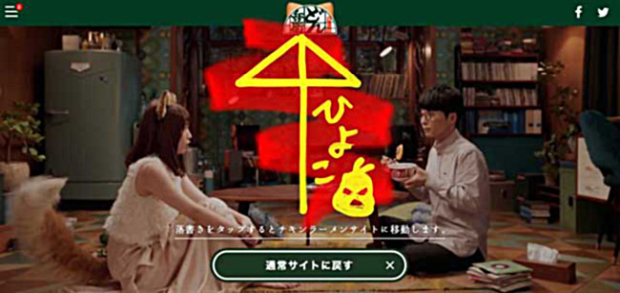
We took great care to create every detail of this campaign. Because the character is so long-established, changing it to a demon was audacious. It could even trigger a negative reaction. In that regard, if numerous aspects of the content were unclear or ambiguous, I think people encountering the campaign would, indeed, view it critically. Such criticism, however, would be unlikely if the story of the character’s transformation was explained in detail, the content left no room for other interpretations, and the overall production was strong enough to exceed people’s expectations.

Nowadays, mascot characters need to be updated to bring companies and consumers together
Q> Over the course of this campaign, how did your view of future advertising change?
Noriaki> More and more mascot characters that exist today will probably be recreated, as we did in this campaign, and it may be necessary for companies to do so from now on. Outside of Japan, KFC Corporation succeeded in turning Colonel Sanders into a virtual influencer by remolding him as a suave young hipster. That created a sensation. Similar trends are happening in various places around the world, and it seems possible for companies that have long-established brands and well-known mascots to attempt such campaigns.
Such campaigns are viable because companies can now communicate directly with consumers through social media. Nevertheless, a company must create some kind of character to lead those communications. Furthermore, the personality and nature of that character needs to be clearly presented in order to communicate effectively. Unless that is accomplished, it will be difficult to decide on how the character should respond to consumers and its style of communicating. Without such distinctive features, the communications will end up being dull and fail to attract many people. If a company chooses to be its own representative, the effectiveness of its communications will largely depend on the talents of the people on the front line. That is why characters are needed.
It is no problem for a company to create a new character from scratch, but if it already has an established character, it will be faster to make use of that character rather than trying to popularise a new one. Conversely, among characters that already have a long history, many do not have a distinctive personality and background because they were not intended to communicate with consumers like they are able to today.
It is becoming important to update existing characters to suit the times. Without losing the fan base they have built up, companies need to attract new followers to their mascot characters. Indeed, there may be expectations nowadays for companies that have long-established mascot characters to create modern versions of those characters.

Q> Finally, what are your goals as a creative going forward?
Noriaki> One of my aspirations is to help create a fad. My impression is that fads prompted by advertisements have decreased compared with many years ago. Nevertheless, fads are still happening around the world. For some reason, tapioca became really trendy, and sales of hand spinners have exploded. I want to be involved in creating a fad on that scale someday.
Along with that, basically, I just want to recommend things I like to people. I hope other people come to like the things I enjoy, such as KochiKame: Tokyo Beat Cops, a very funny manga series about a middle-aged policeman. By promoting the things I like, I hope to repay their creators for the pleasure they gave me. I think really hard about how to do that. It is very simple, but to be able to work on that would be really satisfying.
Noriaki Onoe is a planner at Dentsu’s CDC.
This article was originally published on the Dentsu website on July 26, 2019.













